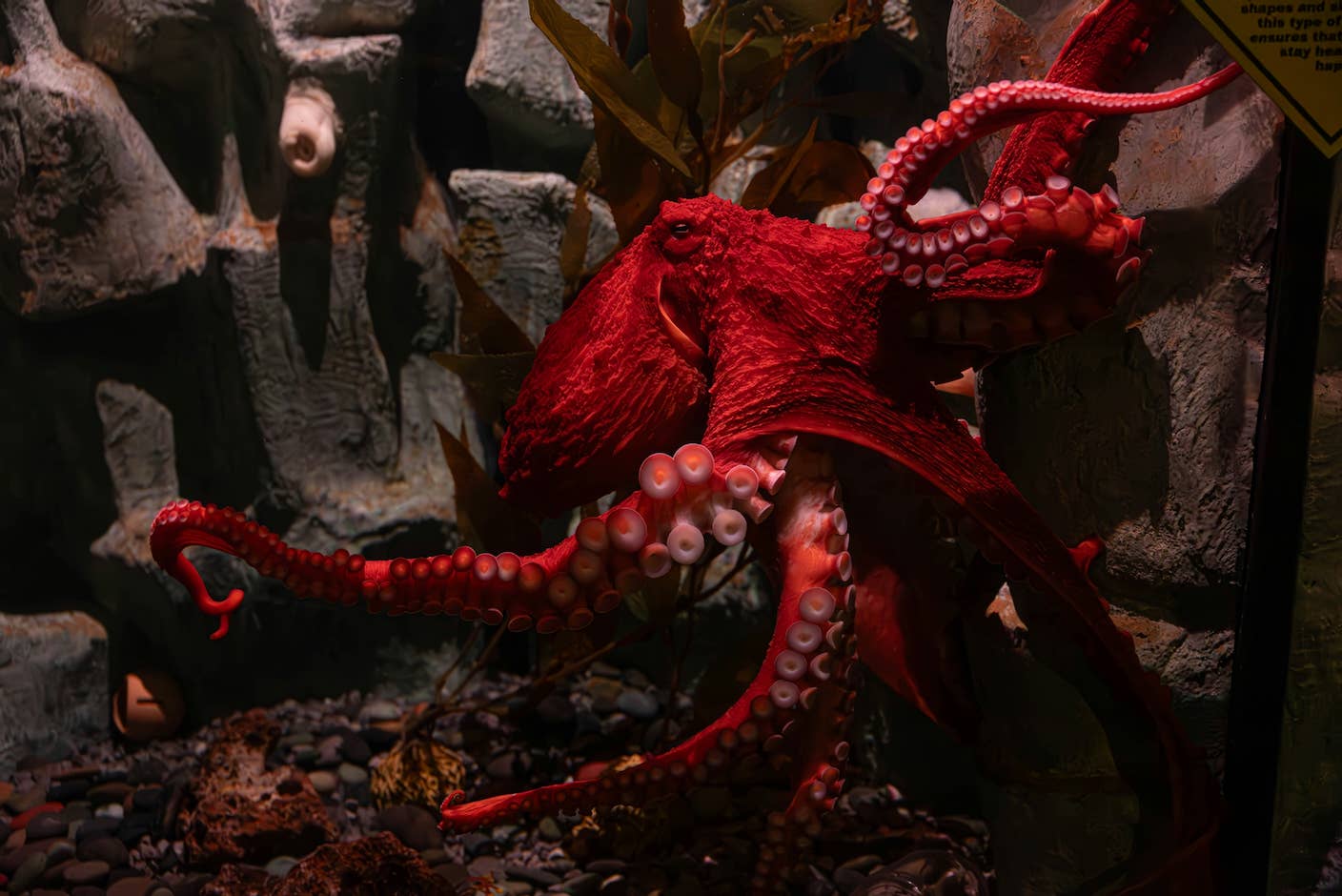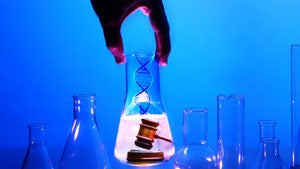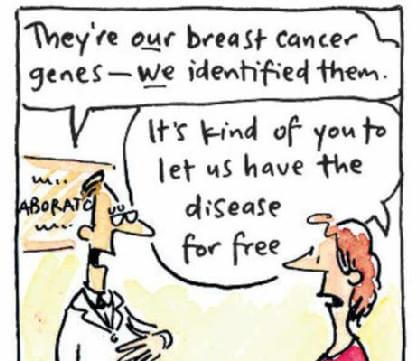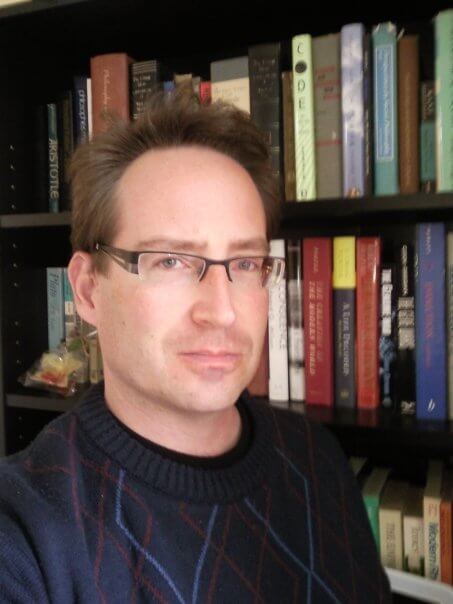Who Owns You? 20% of the Genes in Your Body are Patented

Share
Here’s a disconcerting thought: for the past thirty years, genes have been patentable. And we’re not just talking genetically modified corn – your genes, pretty much as they exist in your body, can and have been patented. The US government reports over three million gene patent applications have been filed so far; over 40,000 patents are held on sections of the human genome, covering roughly 20% of our genes.
Upset? You’re not alone. Critics argue that the patents stifle potential research into disease, keep new treatments off the market, and bring in serious money to Big Pharma – all by exercising property claims that shouldn’t exist. After all, genes aren’t inventions, which are patentable – they’re discoveries, which aren’t. As Luigi Palombi noted recently at the Open Science Summit, “You can’t patent Mount Everest; why can you patent a gene?” Here, we review the history of genetic law, the current state of affairs, and interview David Koepsell, an attorney and author of a recent book on gene patenting, Who Owns You? The Corporate Gold Rush To Patent Your Genes.
The ACLU has been waging a legal war against gene patenting, and some forward progress has been made. A few months back, a major (and unexpected) victory against gene patenting came when a district judge struck down patent claims by Myriad Genetics. Back in 1998, Myriad patented several genes of the BRCA family; mutations along these genes increase susceptibility to breast and ovarian cancer. The patents gave Myriad proprietary rights over diagnostic tests for the mutations – tests they sold for over $3,000 each.
On March 29, 2010, District Judge Robert W. Sweet invalidated seven of the BRCA patents owned by Myriad. The decision shocked supporters and critics alike, and Myriad has appealed the decision. What remains to be seen is whether it will reach and survive a federal court, and thereby become precedent to strike down further gene patents owned by biotech companies.
So how are genes patentable in the first place? Parts of your body have actually been patented for over a century. Adrenalin was patented in 1906; insulin was patented in 1923. The argument for chemical patents was basically that isolated and purified forms of the naturally occurring molecules are more medically valuable than the forms floating around in your bloodstream. A comparable logic is what allows the FDA to outlaw DMT – a chemical also produced within your body, but which acts as a powerful hallucinogenic in its concentrated form.
But gene patents got their big start in 1980 in the case of Diamond v. Chakrabarty. A GE engineer developed a bacterium capable of breaking down crude oil, and filed a patent for it. After a series of rulings and appeals, the case landed in the Supreme Court. On June 16, 1980, the court ruled in GE's favor, and the first living organism was patented in the United States. The key distinction in the Diamond case was that the bacterium was man-made, and therefore constituted an invention.
Human gene patenting works on the logic that if a patent applicant has “isolated and purified” genetic material, it constitutes an invention on their part – even if the strand is identical to the DNA sequence found in nature. Proponents of gene patenting (i.e. generally, the companies or their patent lawyers) argue that patent protection is essential to retaining strong investment in genetic research, which speeds up progress in the field. It’s true that patents are important to the biomedical industry’s ability to attract capital – Myriad stock took a nose dive after the Supreme Count shot down their BRCA patents. But the claim that a world without gene patents would stifle genetic research (or even make it unprofitable) seems overstated at best, and disingenuous at worst.
For years, the logic of purification and isolation has held up legally as a justification for human gene patenting – that’s what made the Myriad case such a landmark decision. We recently interviewed Dr. David Koepsell, both a J.D. and a Ph.D. in Philosophy, about the fallout from Myriad, the ethics of gene patenting, and intellectual property. Koepsell is an author and educator whose work centers on how ethics and public policy are shaped in emerging science and technology. His book Who Owns You? is currently being adapted into a documentary film, including interviews with experts like James Watson and Tim Hubbard. Check out the preview:
Q: After the Myriad case, a large number of commentators reported being surprised at the outcome. I saw headlines with adjectives like “jaw-dropping” and “shocking”. Can you give us an idea of why the outcome was so unexpected?
It was surprising to people like me because we didn’t expect the court to do the right thing. The courts have been making the wrong decision on isolated and purified genes now for some time – for decades. Ever since the case in which the Supreme Court said purified and isolated adrenalin was patentable. So the Patent and Trademark Office (PTO) has been granting patents pretty routinely to isolated and purified chemical compounds, as well as isolated and “purified” (I use that term loosely) genetic sequences. So it was really quite surprising, and for me heartening, that the court in this case (a district court) saw through this notion of isolation and purification as somehow warranting a product claim.
For a lot of the patent community, it was jaw-dropping because suddenly somebody punctured the balloon, and basically said the party’s over if that becomes the law of the land. Of course, as we know, the PTO is not going to enforce this district court’s decision, and they are under no obligation to. It’ll take a long time before it makes its way up to the Supreme Court and is upheld, and there’s a fair amount of question whether that will happen.
Q: What do you expect to come of the Myriad results? Will that case set a precedent for dismantling other genetic patents?
I’ve already seen a lot of Intellectual Property (IP) professionals recommending workarounds. Instead of trying to patent the isolated genes, they’re suggesting more utility claims or process claims, which is good. One of the problems with the precedent in gene patenting is that you’ve had what I call a gold rush. It’s like a land rush: you basically squat on a territory and wait for someone to come along to make it worthwhile for you to sell it. That’s not really pro-innovative. And new drugs haven’t been developed for the most part as a result of these claims.
Recently, somebody developed a very promising vaccine that is going to go into human trials for breast cancer. That vaccine was developed with public funds, not with a patent on the breast cancer genes but despite it. Meanwhile, Myriad is making 300 million in profits per year off their breast cancer gene patent and they haven’t used it. The amount of money that went into this vaccine was only 1.5 million. Myriad could have taken a very small portion of their exorbitant profits and put it into research to develop a vaccine. But there’s no incentive in this land claim on the gene for them to do so. They can make much more money simply reaping this monopolistic pricing over the diagnostic test without having to do any beneficial research into making new drugs.
I think this case will hopefully compel a lot more investigation into real cures and treatments, and less of this sort of squatting. Even if it doesn’t go on to become precedent, if it isn’t upheld later. I think it is sort of a warning shot across the bow. You’re better off trying to come up with something useful and make new products as opposed to simply squatting on these sequences.
Q: It also seems like it’s brought genetic patenting into the public consciousness.
Be Part of the Future
Sign up to receive top stories about groundbreaking technologies and visionary thinkers from SingularityHub.


It has, yes. Most people I talk to still don’t understand it, and don’t know what’s going on. But there is certainly a lot more awareness, especially in the breast cancer community, which is a significant community, about what patents are on these genes and how they’re affecting research and the cost of their treatments.
Q: How do you feel about patenting synthetic life forms – wholly man-made genomes?
I wrote in my book [Who Owns You?] that that’s a legitimate thing to do. The point of patents is that if you create something new that doesn’t otherwise exist in nature, you’ve invented something. The patent system is set up to reward that sort of thing. On the other hand, if you grant those patents too far upstream – and this is a practical consideration – you really can impede innovation. So while I think it’s legally legitimate to get patents on synthetic genes, genes that don’t otherwise exist, I think it’s really imperative to have some sort of practical limit beyond which we don’t patent. You’re not going to want somebody to have a patent on a codon. That’s too far upstream, obviously. So how far downstream is it legitimate?
I think the industry has to figure out where it makes sense for them to draw a line. I think groups like the Biobricks Foundation, who are trying to build these standard parts, are doing the right thing. A repository of standard parts that is in the public domain makes sense from an engineering standpoint. If these tiny little parts can be put together in new ways that are inventive, and you get a patent on that final product, you leave open the possibility for innovators to play around with those parts. I think Biobricks is an excellent example of how the industry is heading off the problem with patenting that can develop if patent attorneys have their way.
Q: Defendants of genetic patents argue that without strong patent protection, capital investment will dry up and research progress will slow. I imagine you disagree – why?
I completely disagree. Especially in pharmaceuticals (and that’s what they’re talking about) the patent system is encouraging people to shoot for blockbusters. Those are the patents that are going to make you a lot of money, and increase your share price. So these blockbuster drugs are costing hundreds of millions of dollars, and most of that is not in R&D. Most of it comes in the marketing. There’s no evidence that they couldn’t develop useful, marketable drugs if they concentrated less on blockbusters, and more on drugs that fill a useful niche in the medical market. Instead, because the value of IP portfolios to corporations, we’re encouraging a very narrow search for baldness cures, ED drugs, etc. – drugs that are going to be marketable to a wide swath of the public instead of people who are suffering from a certain medical condition.
And in fact, history shows this is true. Aspirin is a very profitable drug, even though it went off patent long ago. There are millions of drugs whose the patents have expired that are still profitable, that have well made up for the investment in their R&D. There were actually periods of time in places like Europe, up until the mid-70’s, where you couldn’t get a patent on a chemical product itself. The pharmaceutical companies were making money, magically enough, by making drugs that served a market niche that people bought. The market demand drove the price instead of a monopolistic price structure. The evidence doesn’t bear out that contention [that gene patents are necessary to development] and I trust the free market to be able to come up with solutions.
Q: Where do you see genetic research going over the next few decades?
I personally think synthetic biology is going to be the next big field. Nanotech seems interesting, but there’s so many technical hurdles involved that I think everybody’s realizing you’ve got to use some of nature’s own innovative store of nanotechnology, and use them to do the sort of things we wanted to do with nanotech. Cataloguing the storehouse of usable biological parts and functions is going to be a huge scientific venture for the next ten years or so. Moving that into some innovative new products is where a lot of investment is going to be put, and where we’re going to see some of the promises we held in store for nanotechnology at one time.
---
The Who Owns You film is being directed by Taylor Roesch, and co-produced by Roesch and Koepsell. They are wrapping up filming this summer, and hope to have a final cut ready for festival submissions in the fall. If you donate enough to their Kickstarter project, you can get a DVD copy when the film is finished, plus all sorts of exclusive access.
Special thanks to Dr. Koepsell for taking time to speak with us.
[image credit: Ars Technica; Cathy Wilcox, Sydney Morning Herald; David Koepsell]
Drew Halley is a graduate student researcher in Anthropology and is part of the Social Science Matrix at UC Berkeley. He is a PhD candidate in biological anthropology at UC Berkeley studying the evolution of primate brain development. His undergraduate research looked at the genetics of neurotransmission, human sexuality, and flotation tank sensory deprivation at Penn State University. He also enjoys brewing beer, photography, public science education, and dungeness crab. Drew was recommended for the Science Envoy program by UC Berkeley anthropologist/neuroscientist Terrence Deacon.
Related Articles

AI-Designed Antibodies Are Racing Toward Clinical Trials

Sci-Fi Cloaking Technology Takes a Step Closer to Reality With Synthetic Skin Like an Octopus

This Week’s Awesome Tech Stories From Around the Web (Through January 10)
What we’re reading


